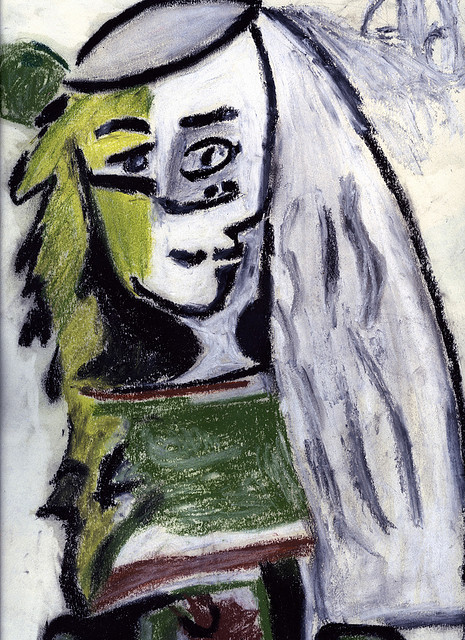Look at the painting above. Does it make you think of Pablo Picasso? The sharp colors and distinctive angles probably do. Let’s say you see this painting hanging in the Metropolitan Museum of Art. Under it is a little placard telling you the artist is Pablo Picasso. A tour walks by, and the leader says, “Here we have an early work by Pablo Picasso.” You see the design again, later, in the gift shop, gracing Picasso post cards. At that point, you’re probably pretty convinced Pablo Picasso painted this painting, right?
Wrong. Pablo Picasso didn’t paint this painting. And there’s a great chance there are hundreds, maybe even thousands, of other paintings in famous museums around the world that claim to be painted by one artist, but are actually fakes, frauds, and forgeries.
For a painting to be hung in a world-class museum such as the Louvre, it must undergo intense scrutiny, much of it forensic. Are the paint pigments as old as the age of the painter? Is the canvas made of materials available from the same era? Where does the painting fit into the timeline and style of the artist’s other works?
For several decades, one man – Wolfgang Beltracchi – was able to evade all of this and get his fake paintings into major museums around the world. He made paintings in every style by every major artist – Picasso, Van Gogh, Monet, Ernst, and more, and he sold them to celebrities and galleries for millions of euros.
Beltracchi didn’t redo paintings already out in the public domain. That would be too easy to pick up on. Instead, he painted fake masterpieces in the style of the artists. He created an elaborate story involving his grandmother, hidden artwork, and the Nazis to explain why, suddenly, all these paintings were now in his possession. And he did an extraordinary job at keeping up the ruse. He used old frames found in flea markets; he stained the labels on the canvases with coffee and dirt to make them look old; he only used paint with ingredients that would have been available to painters he forged.
And the art world believed him. The Metropolitan Museum of Art in New York City put up one of his fakes. Steve Martin bought a painting from him. He even got one of his forgeries onto the cover of a Christie’s catalogue. But in 2010, the scheme was up. The law came down hard.
Art forgery is a criminal offence. While Beltracchi was in France and subject to European laws, the United States has its own way of prosecuting art forgers. It’s through the RICO Act (“Racketeer Influenced and Corrupt Organizations Act”). It lets authorities aggressively go after any sort of organized crime stunt, and in the case of art forgeries, many times it’s a team act; Beltracchi had his wife in on the game. Civil suits are also common in the cases of art forgeries — when millions of dollars get involved in an art transaction, and the price turns out to be fake, you can be sure the purchaser will exercise every legal power he can to recoup his losses.
Recently, a spat of art forgeries across the Eastern seaboard have prompted lawmakers to consider strengthening the laws surrounding intellectual property rights of artists to make prosecuting the forgers easier. In 2012, the sales of paitings worldwide exceeded 60 billion dollars. Every country has an interest in protecting this trade, and ultimately, protecting the consumers of visual art.
People visiting an art museum probably aren’t thinking about the law. Most likely, they are there to get a taste of Cezanne’s apples, to smell Monet’s flowers, or to feel Pollock’s splashes of paint. But the law is quietly protecting the patron, making sure what he sees is authentic, even if he can’t tell the difference between a real and a fake.
Simone Seiver is a student at Yale University and an intern with Life of the Law.
Photo: L. Whittaker via Flickr









